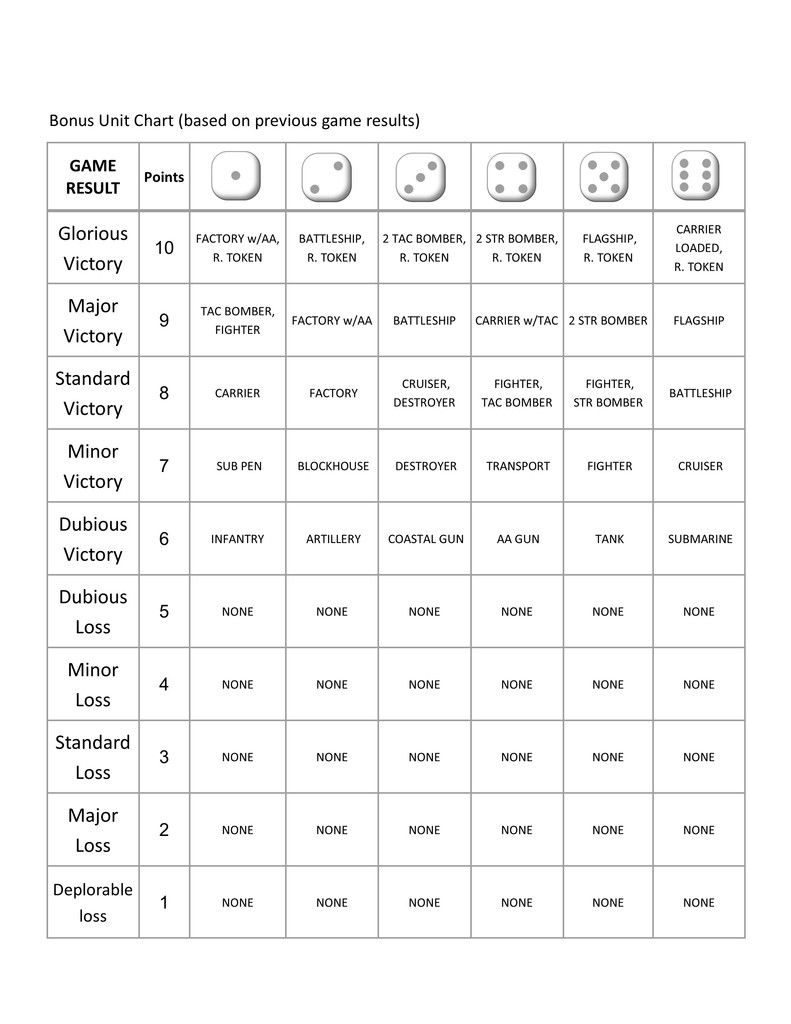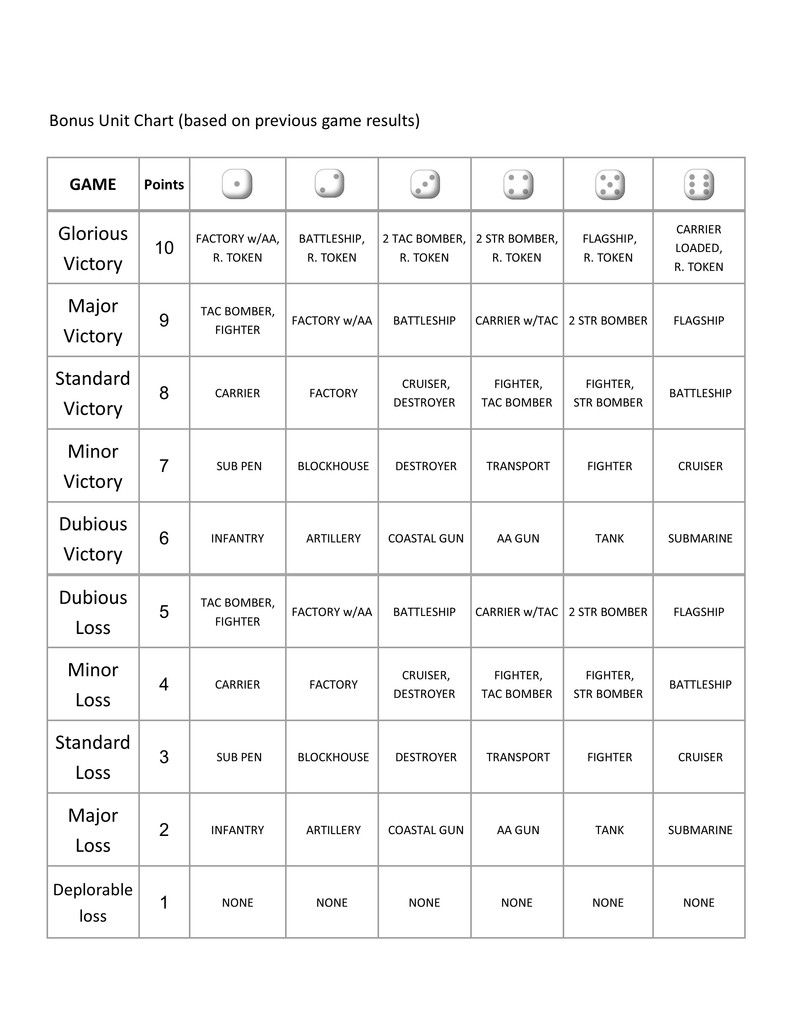Young Grasshopper, I respect the work you put into creating a well-balanced set of victory token objectives, but I don’t like the system for the same reason I don’t like Twilight Imperium 3: when I play a game as long and intense as Axis & Allies, I don’t want it end because my opponents reached an arbitrary target before I did. World War 2 isn’t a horse race; it’s a wrestling match. I want one side to have to force the other to submit in order to score a win. If I understand your victory tokens correctly, if the Allies have 2 tokens and are one territory away from earning a third token when the Axis collect their third token, then you end the game immediately and the Axis totally win the entire game, just as if the Axis were comfortably occupying London and Moscow and Washington all at once. That doesn’t seem either fair or interesting to me.
General Hand Grenade, your R&D tokens are an interesting way to put new areas of the board into play, and there’s some cool drama in trying to share or rescue or capture an R&D token as it moves toward a weaker ally, but I don’t see that system as a real solution to DK’s original complaint about how hard it is to get people to engage in end game play. If you happen to have a killer tech that can be shared with the right ally at the right time in a way that will actually turn the tide of battle, OK, fine, maybe you play on. If you happen to be able to capture an enemy capital that is rich in tech and then safely return the looted tech tokens to your capital, despite the fact that you’re steadily losing the game, then, OK, fine, that’s an interesting comeback mechanic. My first impression is that these scenarios are very unlikely, though – most games won’t even appear to have a plausible tech-based comeback, and so people will still want to quit once they start to fall behind.
Black Elk, the “ascending cards” mechanic in RISK is an interesting parallel. Sure, there’s way too much luck involved in whether you draw the card you need (infantry/artillery/cavalry) to complete your set, but if you zoom out, you can think of the mechanic as “the longer the game goes on, the more violently a pendulum swings back and forth based on cashing in cards, and the less it matters who controls a given continent.” So there’s kind of an inherent timer in the game; yes, you want to (1) control continents/territories in RISK, but you also want to (2) make sure to collect a card every turn and to preserve your armies; the longer the game goes on, the more important Goal 2 becomes and the less important Goal 1 becomes.
I think Axis & Allies actually has a decent natural timer built in based on the completion of the Allied fleets. In the beginning of an Axis & Allies game, position and momentum are the most important thing – the Axis are trying to penetrate to London and/or Moscow before the Allied fleets can arrive to provide reinforcements, and the Allies are trying to slow them down. It’s OK to take fairly large losses in order to gain one extra space as the Axis or in order to deny one space to the Axis. Later in an Axis & Allies game, territory control and preserving armies are the most important thing – if the capital hasn’t fallen yet, then it’s probably not going to fall anytime soon, so the only way to win is by outproducing your opponent and trading your armies more efficiently so that your armies gradually get larger than your opponent’s armies over many turns.
The difference between the two timers is that the RISK timer is chaotic/divergent, in that it rapidly destabilizes the game, whereas the A&A timer is orderly/convergent, in that it gradually stabilizes and freezes the game. Stabilizing the game to the point where the fronts are practically locked in place has the disadvantage of being anti-climactic and of not technically triggering any end-of-game conditions, but it has the advantage of being fair and predictable; instead of winning because you happened to be on the last “upswing” of the pendulum that mattered, you win because the game stabilized at 130 to 110 IPCs in your favor, instead of the other way around.
I don’t think I would change anything about the A&A endgame except maybe to put a hard deadline in somewhere around round 12 – if you can’t win by the end of round 12, the game is a draw. That will encourage at least some players to fight on when they’re slightly behind, and it will encourage strong players to take the occasional risk instead of only attacking when the expected profit is guaranteed positive (cough Marine_Iguana cough), and it will help players agree on how to “score” a game when one side has only a very slight advantage, and it’s not clear whether that advantage will definitely lead to victory.
That said, if you’re specifically looking to explore situations from 1944, 1945, or after because you find those situations interesting, why not play a scenario? There’s nothing wrong with setting up a position where the Axis (or the Allies!) are doomed to lose, where the object of the game is simply to last for X turns without being defeated. There’s also nothing wrong with starting the game from a balanced position that’s much later in the game, e.g., US has conquered Tokyo and Germany has conquered Moscow, or even an early Cold War type scenario, with the USA in West Germany/Tokyo and their ex-ally Russia in East Germany/Manchuria.








